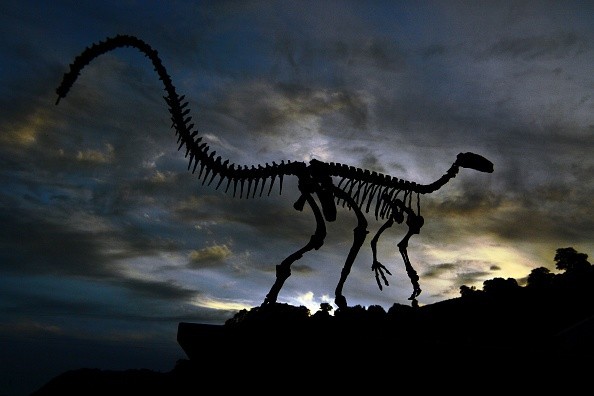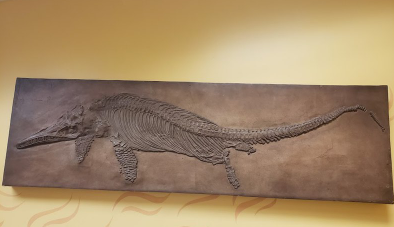For the first time in 2020, scientists witnessed what may be the world's longest mammal. A 150-foot-long (45-meter) siphonophore was discovered in a deep-sea canyon off the coast of Australia.
Each member of this species comprises several smaller organisms called zooids that link to form a long, string-like colony that swims freely in the ocean, similar to coral.
Given how long it took humans to uncover this massive siphonophore, it begs the question: are there any more huge creatures humans have yet to discover?
Discovering Gigantic Animals
Yes is almost probably the answer. The siphonophore is one of the numerous giants discovered by humans in recent decades, and scientists are constantly learning about life on Earth.
According to the Monterey Bay Aquarium in California, siphonophores reside below the surface between 2,300 and 3,280 feet (700 to 1,000 meters). However, finding new enormous species may not necessarily necessitate such extreme measures. A previously unknown whale species washed ashore on a beach in New Zealand in 2011.
According to Whale and Dolphin Conservation, an international organization that works to conserve whales and dolphins, scientists recognized the behemoth in 2021 as a new member of the beaked whale family - a previously unknown type of deep-diving whales that are seldom seen alive.

Just Starting
While scientists are only beginning to unravel the mysteries of the deep ocean, they are far better familiar with enormous terrestrial species.
On the grassland, African bush elephants make unmistakable shapes. According to The Nature Conservancy, they are the world's largest living land creatures, standing up to 13 feet (4 meters) tall and weighing up to 11 tons (10 metric tons). It's difficult to believe humans could go without seeing a giant, elephant-sized beast walking our world.
Perhaps this is why, rather than fresh discoveries, most big land animal research results in reclassifications. According to Live Science, in 2017, researchers discovered that an isolated population of orangutans on the Indonesian island of Sumatra was a separate species from other orangutans and dubbed them Tapanuli orangutans (Pongo tapanuliensis).
However, these orangutans were previously known to humans, and at less than 5 feet (1.5 m) tall, they aren't exactly giants. Meanwhile, there's no actual proof of Bigfoot, Nessie, or any large fabled monsters that aren't previously known.
Instead of being observed alive, the biggest undiscovered terrestrial creatures are dug up. Humans are continually sifting through Earth's geologic history, uncovering previously undiscovered giants in the fossil record. According to Britannica, a genus of supermassive sauropod dinosaurs known as titanosaurs - gigantic, long-necked herbivores - is among the newly found behemoths.
Discovery of Titanosaurs

Some of the greatest titanosaurs have recently been discovered in Argentina, yet they are already competitors for the world's largest terrestrial mammals. Although there is still scholarly controversy regarding their sizes, Argentinosaurus was most certainly the heaviest and maybe biggest of all titanosaurs.
According to the Natural History Museum in London, Argentinosaurus' bones indicate that it was 115 feet (35 meters) long and weighed up to 77 tons (70 metric tons). However, new challengers continue to emerge.
Patagotitan mayorum first appeared on the paleontology scene in 2014, weighing 66 tons (60 metric tons) and measuring 122 feet (37 meters) in length, according to Live Science.
Researchers revealed the finding of another titanosaur in 2021, which might be even larger, although the animal has yet to be properly excavated.
Barrett believes that additional gigantic titanosaurs will be discovered in the future. According to him, the pace of these findings has grown in tandem with a generally rising trend in fossil discoveries since more paleontologists are investigating in more diverse locations than in the past.
Barrett explained, "Historically, most of that work was done in countries where the individuals publishing were headquartered - thus, in North America and Europe." "That knowledge base has extended much more extensively worldwide in the previous 30 to 40 years."
Needing More Samples
Despite this higher pace of finding, the proof for large extinct monsters isn't always available. Only a few dozen bones have been discovered of Argentinosaurus, the biggest dinosaur.
A possible maximum size for a terrestrial animal is unknown to scientists. Blue whales (Balaenoptera musculus) are the biggest mammals on record if you consider marine species, with a maximum weight of at least 150 tons (136 metric tons). However, they do not have to support their weight on land as titanosaurs did.
There has to be a limit to how enormous creatures can get and yet hold themselves under gravity and acquire enough energy to move their massive bodies. Barrett said he'd be shocked if dinosaur findings increased in size much, but paleontologists have been astonished previously.
For more prehistoric news, don't forget to follow Nature World News!
© 2025 NatureWorldNews.com All rights reserved. Do not reproduce without permission.





